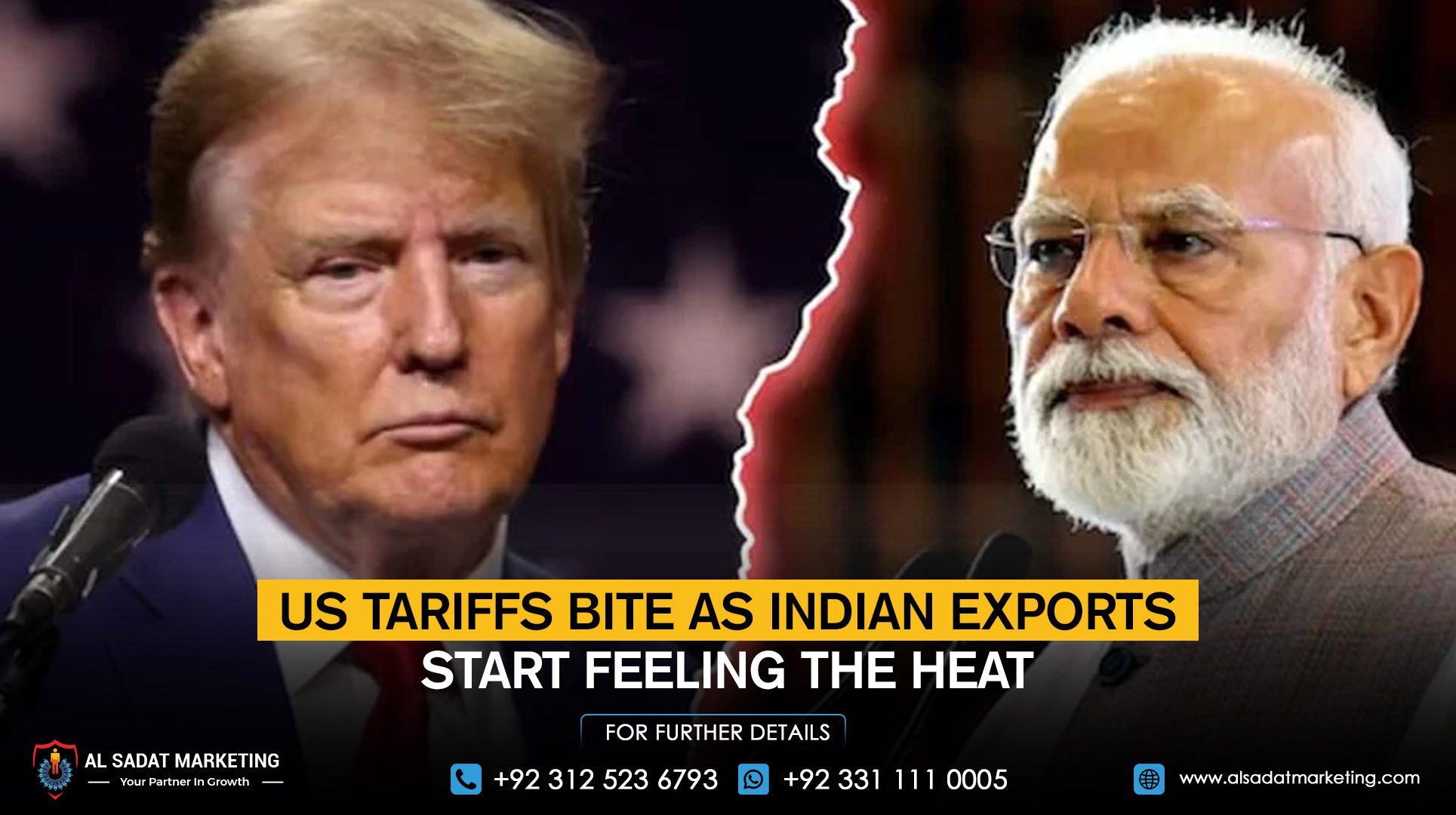Indian exporters are bracing for a steep decline in U.S. orders as Washington’s new tariff hike on Indian goods takes effect from Wednesday. The U.S. Department of Homeland Security confirmed that an additional 25% duty will be applied, raising total tariffs on Indian products to as high as 50%. These are among the highest duties the U.S. has imposed and come in response to India’s rising imports of Russian oil.
Trade talks between the two nations collapsed after five rounds of negotiations failed to reach a deal. Indian officials had pushed for a tariff cap at 15%, but both governments later admitted to “political misjudgment” and missed signals that derailed progress.
The new tariffs will hit nearly 55% of India’s $87 billion worth of exports to the U.S., dealing a blow to industries like textiles, food products, leather, gems, and jewellery. Exporters warn of an immediate impact. “The U.S. customers have already stopped new orders,” said Pankaj Chadha, president of the Engineering Exports Promotion Council, who expects shipments to drop 20–30% starting in September.
To soften the blow, the Indian government has announced relief measures, including subsidies on bank loans and incentives to diversify into markets such as China, Latin America, and the Middle East. However, exporters remain doubtful about whether these alternatives can fill the gap left by the U.S. market.
The economic fallout is already visible. The Indian rupee slipped to a three-week low of 87.68 against the dollar, while stock market indexes dropped 1% each, their sharpest decline in three months. Analysts warn that if tariffs remain at 50% for long, India’s growth could shrink by nearly 0.8 percentage points this year and next.
The diamond and jewellery industry faces added strain, with the U.S. buying almost one-third of India’s $28.5 billion annual exports in this sector. Already struggling with weak Chinese demand, the industry now sees its biggest market under threat.
U.S. officials, including Treasury Secretary Scott Bessent, accused India of “profiteering” from Russian oil, which now accounts for 42% of its imports compared to less than 1% before the Ukraine war. India, however, defended its stance. Foreign Minister S. Jaishankar noted that Washington has not applied the same pressure on China or the European Union, which also buy Russian oil.
Despite the trade clash, both countries reiterated their commitment to defense partnerships, energy cooperation, and the Quad alliance with Japan and Australia. Prime Minister Narendra Modi also vowed to protect farmers’ interests and is preparing for a rare visit to China later this month, his first in seven years.
The tariff standoff marks one of the most serious trade disputes between India and the U.S. in recent years, with exporters warning that the ripple effects could last well beyond 2025.










